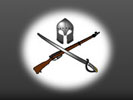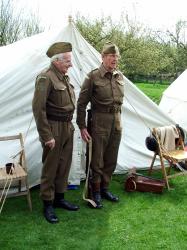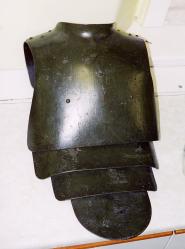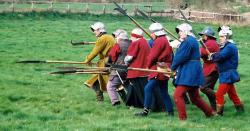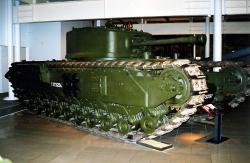Translate this Page
Recent reviews :
- The Men of Wellington's Light Division (Gareth Glover and Robert Burnham)
- Blood, Guts and Gore. (John Gordon Smith )
- Armoured Warfare in the British Army 1939-1945 (Dick Taylor)
- Battle Understanding Conflict Hastings to Helmand (Graeme Callister & Rachael Whitbread)
- Eyewitness at Dieppe (Ross Reyburn)
- Echoes From Dawn Skies - Early Aviators: A Lost Manuscript Rediscovered (Frederick Warren Merriam)
- The Decline of Empires in South Asia (Heather A Campbell)
- The Final Curtain Burma 1941-1945 (Jeremy Archer)
- The Harwich Striking Force (Steve R Dunn)
- Churchill's Arctic Convoys (William Smith)
Book reviews for - Ancient, Classical or Roman
-
Roman Conquests: Britain
Simon Elliot
Here we have a super overview of a complex series of events presented in a most readable manner. The vast majority of the content is confined to the shores of Britain but there is sufficient material to give Britain a context within the wider Roman world. Among the general information is a running commentary on the changes within the Roman military over the period of the occupation of Britannia. The main invasion leading to settlement is of course dealt with in detail. The later attempts to expand to cover the whole of the mainland are also explained. The whole island was never conquered and this directly resulted in the necessary continuing presence of a significant military force. Perhaps the most telling sentence which came out of the author’s research is the fact that 12 per cent of Roman military establishment was in 4 per cent of its geographic area. This book goes a long way to explaining why. The gradual end of Roman occupation is set in the context of the decline of the whole empire brought about in no small part by the infighting of would be Caesars. Many uprisings began in Britain and in the process removed valuable troops to support the leader’s claims on the continent.
There is a very good set of illustrations but the reader is expected to know the geography of Britain and its immediate neighbours as there is not a single map. The timeline and the bibliography are both great supports to the reader wanting to know more in detail. [Simon Elliot's book on Roman Britain's Missing Legion reviewed on this site is a case in point]
This book is a good stand alone read and a valuable jumping off point for those who want more. We highly recommend it.
Pen & Sword Military, 2021
-
Roman Britain's Missing Legion
Simon Elliot
Here we have an historical detective story pursued with academic rigour. The mystery trail is that of the legio IX Hispana from its raising by Octavian in 44/43 BC to its disappearance from the historical record between 104 and 108 AD. All the plausible explanations are dealt with. The four major possibilities/probabilities are each considered both in an evidential way and speculative way. The conclusions are as precise and strong as the evidence allows. This raising and discussion of the possibilities is the substance of the book and is fascinating to follow
There are some appropriate photographs and an excellent bibliography. .To give away the conclusion would be to spoil a real detective story.
We highly recommend this book.
Pen & Sword Military, 2021
-
The Secret History of the Roman Roads of Britain
M. C. Bishop
A unusual book on this topic, in that only a small section of it is actually about the Roman Roads themselves. The majority of the well argued and researched text places the roads in the context of the possible pre-existing transit routes around Britain and argues for them following already well established routes. It also then places the subsequent history of the nation in the context of the Roman road network and argues for the pivotal role of these roads in many battles, wars and historical events ever since.
I perhaps would have liked a little more on the roads and the associated archaeology, but I understand there are plenty of other books that cover this. However I feel this provides a refreshing new look into the meaning, context, and lasting effects of one of the most easily seen but oft overlooked artefacts of Roman Britain.
Pen and Sword Military, 2019
-
Rome Rules the Waves
James J. Bloom
Rather dry academic thesis with a large amount of discussion of other academic views. The book is based on the premise that there can be a Naval Staff appreciation of the Roman Navy. In the introduction Bloom points out that there isn't anything which could be termed a Naval staff in Rome. He goes on to write this book about it. What does show is the massive amount of research and thought which has gone into the writing. But, on the other hand, I found the reading difficult. For the general reader I would recommend skipping the discussions and reading, what then becomes, a very good history of Roman naval actions.
Pen & Sword Military, 2019
-
Great naval Battles of the Ancient Greek World
Owen Rees
This is the story of thirteen major naval battles in a period of one hundred years. They are placed in their political/strategic context supported with details of the ships, the men and the tactics. Owen Rees has done a good job in bringing together the rather limited sources staying true to all of the original texts and filling in the gaps with well-reasoned conjecture. Interestingly he has shown, where texts disagree, how propaganda or ‘putting a slant on the record of events’ was well within the arsenal of writers in classical times.
The descriptions of the battles themselves really succeed in getting the reader into the picture. There were some rules of war but these were different from what we would expect today. Desperate hand to hand fighting, the slaughter of prisoners, some as sacrifices, and the execution of failed commanders all point to a bloodier age. Numerous battle plans add to the readers understanding as do the extensive endnotes and bibliography.
I really enjoyed this book and would recommend it to anyone interested in early naval warfare or classical Greece.
Pen & Sword Maritime, 2018
-
Handbook to Roman Legionary Fortresses
Bishop, M C
Providing exactly what the title suggests, this is primarily a gazetteer of all currently known Roman Legion bases, each with well referenced details such as location, situation, size, orientation etc. as well as the units that were based there together with line drawings and photographs. The handbook also contains appendices of Legionary timelines and a clear list of fortresses listed in the Notitia Dignitatum.
The introductory section is short, but focussed carefully on the architecturally important details that pertain to Legion bases, and while well written, does assume a reasonable working knowledge of Roman military history. The bibliography is truly huge, and all in all this handbook should be considered an essential reference for a Roman military scholar.
Pen & Sword, Barnsley., Jan 2013
-
Hadrian's Wall in the Days of the Romans
Embleton, Ronald & Graham, Frank
It is obvious that an immense amount of research has gone into creating both the pictures and the text. An excellent book.
Frank Graham, 1984
-
Rome at War, Caesar and his Legacy
Gilliver, Goldsworthy & Whitby
A 3 part work covering Caesar's Gallic wars, his civil war, then a study of late Rome in 3rd to 7th centuries
Osprey, Essential Histories, 2005
-
Warfare in the Ancient World
Humble, Richard
The book gives an overview of the art of war from 3000bc to the fall of the Roman Empire.
Guild Publishing, 1980
